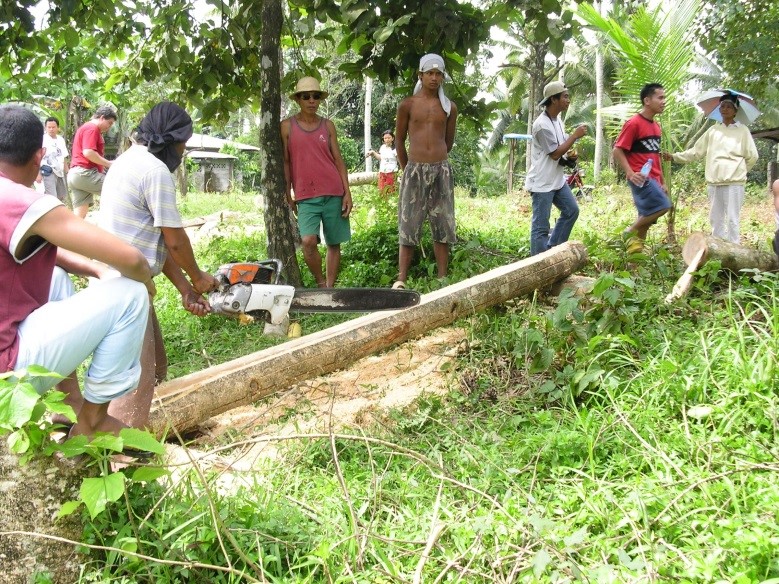By Jarrah Dominic Wills
Diverse understory development within forest plantations can provide conservation value in highly modified tropical landscapes, but how many species should be used to establish a initial canopy structure to encourage recruitment: one species, two species, or more? And how does the quality of the understorey environment and functional traits of the species matter when it comes to kick-starting understory recruitment? To find answers to these questions we investigated species and functional diversity of understory vegetation beneath small-scale community-based mixed-species plantations, known as ‘Rainforestation Farming’ that uses mostly native species and aims to provide biodiversity and socio-economic benefits. We compared these mixed-species plantations with exotic monoculture (Swietenia macrophylla) plantations and with natural regenerating selectively logged forest understories across the island of Leyte, Philippines.
In tropical countries the goals and reforestation techniques of smallholder tree-farmers often differ from those of an industrial owner. Smallholders may prioritize production and timber uniformity over biodiversity value. Consequently, management techniques such as thinning and weed control are not as high priorities, as maximising basal area and minimising growing deformities is not the goal. In smallholder plantations trees are often selectively harvested with just a few cut down depending on local need. Under these management practices, understories can develop, which may increase the value of these plantations for conservation, by providing habitat and ecosystem services such as nutrient cycling and hydrological flow, and enhance habitat connectivity. Extending plantation rotation times may also provide additional non-timber forest products that amplify the socio-economic value of plantations beyond timber alone.
We found that exotic mahogany monocultures recruit less understorey diversity (averaging 11 species, compared to 19 for mixed-species plantations and 24 for regenerating selectively logged forests) highlighting that re-establishing any tree cover in a highly fragmented landscape can provide some conservation value. The family Moraceae maintained similar levels of diversity across forest types, emphasizing their strong dispersal abilities, likely via habitat generalist bird species. Fruit size classes indicated the strong association these plantations have with local people, with monoculture understories containing the highest number of large-fruited domesticated species (e.g. Mangifera indica and Theobroma cacao), potentially increasing the plantations’ socio-economic value within the next-generation. The functional group that was largely missing in the exotic monocultures was wind-dispersed native tree species, which were three-times more abundant in naturally-regenerating selectively logged forest than in monoculture plantations.
The absence of wind-dispersed tree species is ecologically and economically significant. Species from the Dipterocarpaceae family are wind-dispersed, and are ecologically dominant and economically important throughout Asia, making up the key framework of the forests in the emergent layers of the canopy. These species are typically highly valued as a timber resource, and are subjected to high rates of logging, resulting in a low prevalence and low genetic diversity. Being wind-dispersed they also have relatively shorter dispersal distance especially in highly modified and fragmented landscapes and seed production is often irregular being dependent on unpredictable and sometimes rare mast fruiting events.
Wind-dispersed emergent tree species provide the structural framework in tropical forest ecosystems, but a considerable amount of research and focus has been on animal-dispersed species in tropical forests. Our results show that in addition to other limited functional groups, such as large-seeded animal-dispersed species, native wind-dispersed tree species should also be considered in the tropical forest restoration.
Image: Unique harvesting technique often used in small-scale community-based plantations (Photo credit Jack Baynes)


